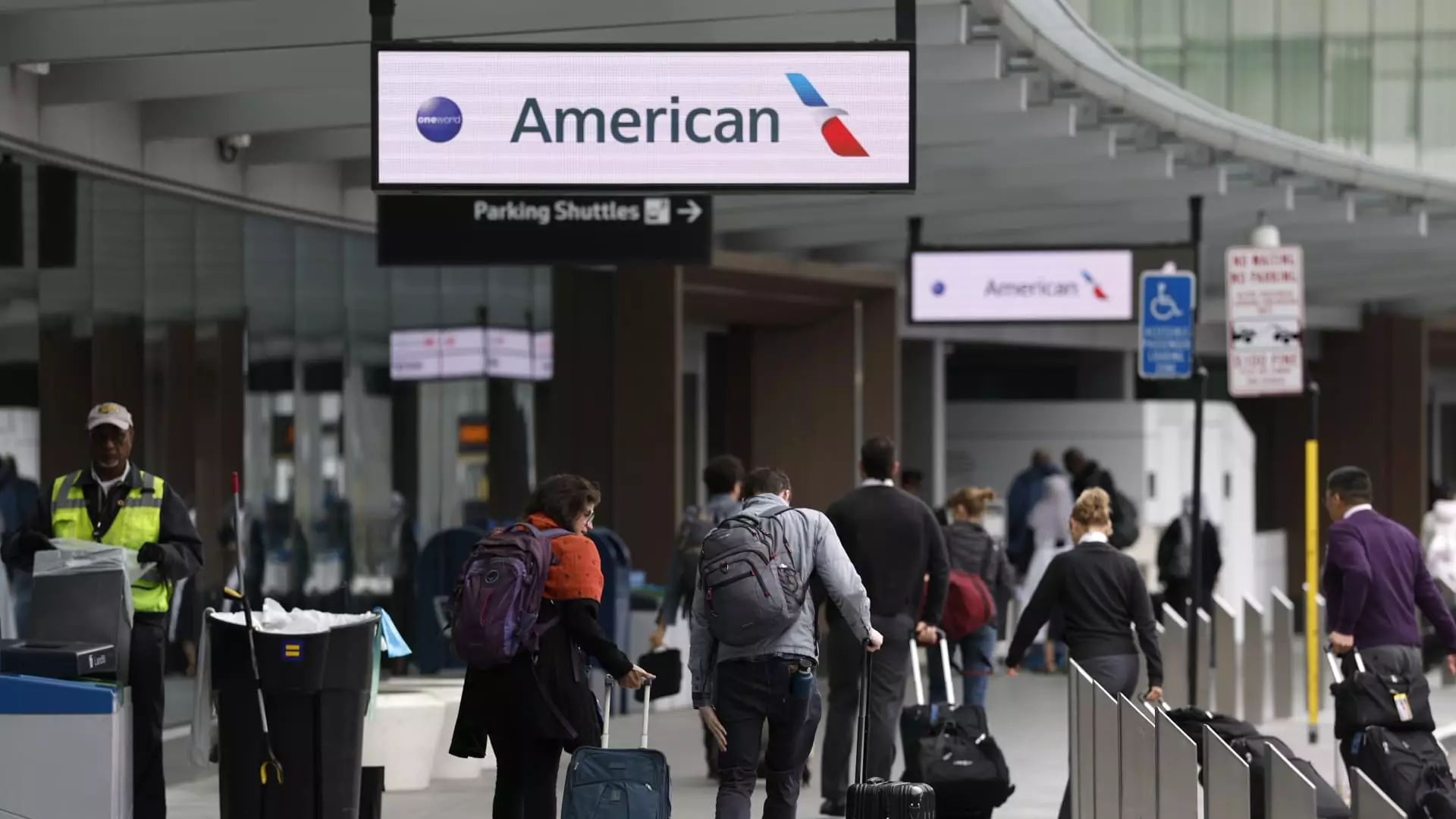As we peel back the layers of the airline industry’s current predicament, a narrative of uncertainty increasingly dominates the conversation among CEOs. The dialogue from executives correlates with the prevailing economic trends and paints a concerning picture: the gap between soaring expectations and sobering realities is widening. Amid a backdrop of unexpected geopolitical shifts and erratic market conditions, 2025’s promising forecasts for domestic travel appear increasingly vulnerable. The sense of economic insecurity is palpable, and the ramifications for airlines could be severe.
American Airlines CEO Robert Isom aptly pointed out that no one is enthusiastic about making significant financial commitments when uncertainty reigns supreme. This sentiment cuts to the core of consumer behavior as potential vacationers hesitate over their travel plans, wary of investing their hard-earned cash against a murky financial horizon. Such trepidation translates directly into diminished passenger demand and ultimately threatens to unravel the anticipated recovery in air travel.
Capacity vs. Demand: A Pyrrhic Victory?
The dissonance between planning and practice has pushed major airlines into a complex conundrum: they are grappling with too many seats but not enough travelers eager to occupy them. Delta, Southwest, and United Airlines’ curtailment of their capacity growth plans underscores a stark realization of the distance between their forecasts and actual demand trends. The act of pulling back financial outlooks reinforces a critical point; the airline industry is not immune to external economic forces. Predictions that appeared sealed and delivered are now subject to volatility stemming from government policies that seem to favor uncertainty over stability.
The airlines’ response—cutting ticket prices—is a classic illustration of their deep-rooted struggle. With airfares dropping by 5.3% compared to last year, it’s clear that the competitive landscape is shifting. Price-sensitive customers, once charmed by the idea of expanding their travel horizons, are now confronted with a reality check. Is the trend towards frequency in domestic trips turning into a fleeting mirage? The fear of a recession looms large, and it’s leading to conservative spending across the board, pushing airlines to scramble for solutions.
The Corporate Travel Dilemma
Corporate travel, often deemed the golden goose for carriers due to its higher margins and reduced price sensitivity, is in a state of stagnation. Analysts like Conor Cunningham have noted that businesses are re-evaluating their travel budgets, especially when the external environment reveals more risks than rewards. In Conor’s analysis, the first cuts are typically made in the realm of corporate travel, articulating a fear that echoes throughout the industry. If corporations, the backbone of business travel, retreat from their previous spending levels, the ripple effects could hit airlines hard, constraining their ability to offset costs associated with overcapacity and operational adjustments.
Companies like Alaska Airlines have already acknowledged the pressure exerted by lukewarm corporate demand, illustrating a broader trend impacting second-quarter earnings. CFO Shane Tackett candidly acknowledged that the fares, once robust, are losing vitality, leading to an awkward dance of lowering prices to fill seats. It illuminates a fundamental truth about the industry: while demand may remain ostensibly high, it is not meeting the fevered expectations built on previous year’s performance.
International Travel: The Silver Lining?
Despite the domestic struggles, airlines have found a glimmer of hope in international travel, which continues to attract customers. The appetite for overseas destinations remains strong, providing critical support for their bottom lines. This trend hints that while the domestic market flounders, long-haul routes may serve as a lifeline, buoying airline revenues amidst turbulent conditions. However, lingering concerns about economic conditions still cast a shadow over this optimism.
In his remarks, Isom captures the broader sentiment prevailing in the industry: restoring certainty is key to navigating the storm. But will this reassurance arrive in time to salvage the projected financial forecasts for 2025? The path forward seems fraught not merely with risk but with a need for strategic recalibration as airlines adapt to a reality that increasingly diverges from their optimistic projections. The clarity that Isom yearns for remains elusive, leaving the industry to grapple with a transition rife with uncertainty.

